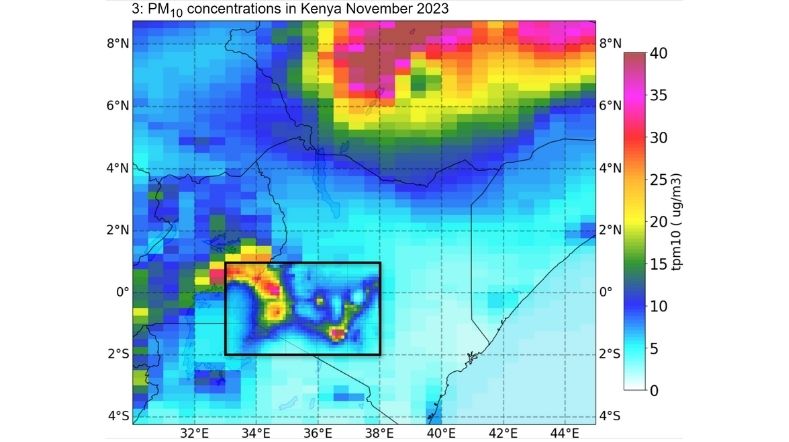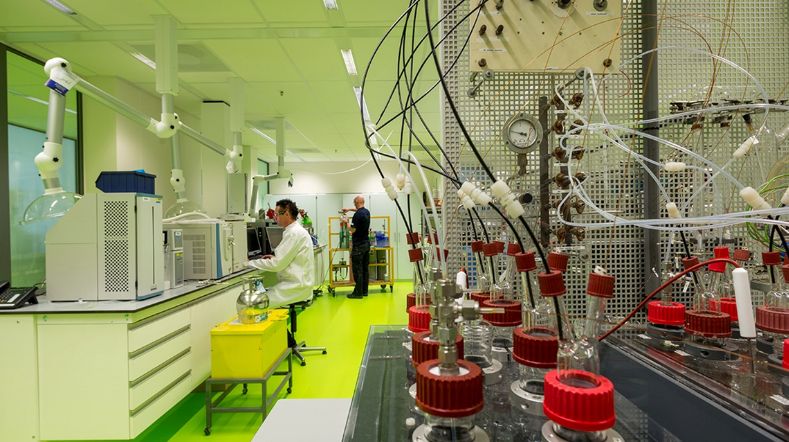
5 steps for policymakers to work on healthy air outdoors
Poor air quality poses significant health risks, including the risk of asthma, COPD, and lung cancer. This causes loss of healthy years of life and premature death. It's not for nothing that the WHO recommends further tightening of the particulate matter standard. TNO is introducing the approach to healthy air, a new way to help policymakers accurately map where and when people are exposed to poor air and which sources are responsible. In 5 concrete steps, policymakers can improve outdoor air quality for residents.
↓ Directly to TNO’s approach to healthy air
Unique air quality approach: getting straight to work on healthy air
With TNO’s approach to healthy air, we offer you detailed information on air quality in your municipality or province. We combine daily measurements with specific data on where residents are during the day. This gives you an accurate picture of the impact and origins of air quality, allowing you to make informed decisions on air quality management in relation to health.
This is crucial: long-term exposure to poor air eventually causes lung and heart diseases. And for vulnerable groups peak load can lead to all kinds of health complaints, possible hospitalisations, and, in the worst cases, even heart failure, which may kill people.
With this approach, it’s possible to calculate targeted measures that will allow many people to draw a breath of relief much more often throughout the year. As a policymaker, you can start using this approach to healthy air today to improve air quality in your region.
Discover our 5-step approach to healthy air outdoors
What is the air quality like in my municipality? TNO maps where emissions are highest in your municipality.
We chart this in detail from hour to hour. To do this, we combine insights and data from various sources. In addition to emission and concentration measurements, we also use data on weather, chemistry, and emissions in one big model system.
In order to take effective action and invest in targeted health gains, it’s important to know where and when citizens are most exposed to polluted air.
Insights from anonymised mobile data are used to get an up-to-date and dynamic picture of citizens' locations and movements. They’re linked to air quality data at that specific location. This shows precisely whether many or few people are exposed to the polluted air.
By combining the data from all the different measurements, we gain a better picture of the sources contributing to poor air quality.
Traffic, industry, households, but also the hospitality industry can be major sources of air pollution. Some is also blown in from outside the region. In addition to the source, we also identify the exposure to this source and the potential impact on our health by combining steps 2 and 3.
Together with policymakers we look at targeted measures to reduce exposure, based on the comprehensive data. What control knobs can we turn to improve air quality for residents?
For example, relocating industry, making inner cities car-free, or mandating exhaust systems for the hospitality industry. The effects of different types of measures on air pollution can be calculated and visualised.
Is it time to draw a breath of relief? After implementation of the measures, it will be possible to measure again whether air quality has improved sufficiently, or whether additional measures may be needed. This approach based on local facts also helps create public support among citizens and industry.
The World Health Organisation (WHO) has compiled air quality guidelines. The annual average for PM2.5 is set at 5 µg/m3, and the 24-hour average at 15 µg/m3, which may be exceeded a maximum of 3 to 4 times per year.
Particulate matter map of the Netherlands
Why particulate matter? We can achieve the greatest health impact by tackling particulate matter. According to the WHO air quality guidelines, particulate matter concentrations shouldn’t exceed the daily average limit of PM2.5 for more than 4 days per year.
The map below shows how many days per year Dutch municipalities exceed this air quality guideline. This is in part due to natural particulate matter such as sea salt, but a major part of it is due to anthropogenic emission sources, such as road traffic and shipping. This is something we can actively do something about!
The map shows that all municipalities in the Netherlands too often exceeded the WHO's daily limit for particulate matter in 2022. Some municipalities even exceeded the daily limit 60 to 70 days per year. Interestingly, Zeeland and Limburg stand out negatively, as particulate matter from Belgium and Germany blows over to these border regions. Click on a municipality to view and compare.
Working on healthy air together – No time to lose:
We see opportunities to improve air quality in your region. Do you see them too? After all, we all want to draw a breath of relief. At TNO, we’re happy to help you. Contact us for a free initial consultation.
With the local air quality map and TNO data as input, we’re happy to discuss opportunities and possibilities to make health gains with clean air in your region. Because we have no time to lose to reduce the number of air pollution victims and give residents a better quality of life.
Find out more
Discover our long-term approach
About 80% of health damage from air pollution is caused by particulate matter. Although successful policies have halved the concentration of particulate matter since 1995, the decline has stagnated in recent years.
This is also because the composition of the particulate matter mixture is gradually changing. Real health gains require a new approach, for which TNO has developed a clear long-term vision.
Questions? Contact us
Get inspired
Prospective Life Cycle Assessments for future-proof product design


ATACH selects TNO model for climate-related health risks in Kenya


Netherlands Materials Observatory (NMO) officially opened


Recovering critical raw materials from LFP Batteries


Biobased plastics in a sustainable future



